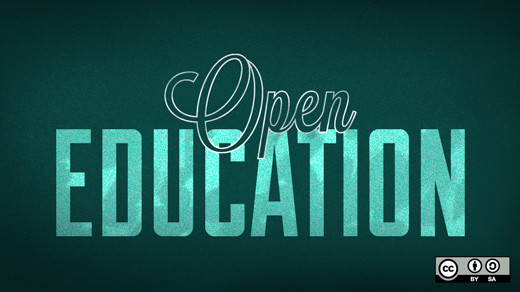Open source is playing an ever-expanding role in education at all levels. One school board that’s embraced open source is the Penn Manor School District in Pennsylvania. The District has rolled out the largest open source student laptop program in the state, with 3,500 Linux-powered computers distributed to students.
But Penn Manor’s commitment to open source goes deeper than just handing out laptops. The schools themselves are now run on open source.
At the All Things Open conference in Raleigh this year, Charlie Reisinger, IT director of the Penn Manor School District, will be sharing Lessons from the Open Source Schoolhouse. Reisinger talked with me ahead of All Things Open and offered his insights into why Penn Manor’s open source efforts have been so successful.

Penn Manor has taken the migration to open source beyond giving students laptops loaded with open source software and deploying systems like Koha to migrating to an open source PBX. Why did you go 'all in' like that?
Open source platforms have been key to our infrastructure for many years. Self-sufficiency has always been one of my team's guiding principles. We host all of our systems internally.
Early on, my staff and I relied on network tools like Apache and Cacti and ran Linux on servers everywhere we could. During the 2001-2002 school year, when we worked with a small company to create a web-based teacher gradebook running on LAMP. Teachers loved that gradebook, and I discovered just how agile the open source development model can be.
Our first big bet on open source as a virtual classroom platform was Moodle. We deployed WordPress or classroom blogging and school web pages, brought in Koha to modernize our library system, selected sipXecs for our phone system, and ownCloud became our private cloud platform and teacher backup system.
In 2011, I was faced with replacing an aging fleet of elementary school Macbook laptops. The budget was tight and we needed to stretch our technology funds as far as possible. After reviewing teacher classroom needs, evaluation the state of Linux desktop environments, and factoring in the hardware (Lenovo x120e laptops), we decided to give Xubuntu a try.
To help make the shift a little easier for students and staff, we customized the panel and user interface based on teacher feedback and request. The laptops were well received in the classroom and we were faced with a new problem: how to provide more classrooms laptops!
Our Linux fleet grew from there. Today, we support over 3,500 Ubuntu laptops and desktops across grades Kindergarten through 12.
Earlier this year, your team rolled out a 1:1 laptop program at Penn Manor High School. What effect has this program had on students?
Few educational programs are as transformational to student learning as 1:1 laptop programs. We've talked a great deal about open source, but the real story is what happens when a school provides a rich computing device to every student, and trusts their students to self-direct their own learning.
Unfortunately, many schools spend obscene amounts of money to issue laptops or tablets that runs only the programs school administrators say should run. Students can’t install software, examine code, or tinker with the operating system.
A software cage is not the learning vision we had for our kids. We encourage our students to explore the command line and software. They have root access on their school issued-laptop. They are trusted to make good choices, to be ethical, to be professional. We want them to discover computing.
Open source champions a participatory, collaborative team mentality, and this is perfect for student learning. I love that an open source philosophy flattens the classroom hierarchy between teacher and pupil. Our student peer help desk program is a perfect example.
There are people who argue that open source actually costs more than proprietary solutions. Have you ever run into that argument? If so, how did you respond?
It is misguided. A smart organization will invest in staff training, development, and support no matter what software is utilized. We've discovered that the software cost savings can be reinvested in other programs.
The quality of open source software and the commitment of the development communities to key projects continues to simply amaze me. I often reflect on the fact that our students and teachers benefit from the selfless and passionate work of tenacious developers, strangers that they will likely never meet in person but have had far reaching impact on education.
Another key difference is that the open source community amplifies the capabilities of an organization's IT team. Direct access to developers for troubleshooting, insight, and support is powerful.
Using open source can save a school or school district money. What does using open source offer to students, teachers, and staff?
I think that open source software is a catalyst for student learning on two levels.
First, free and accessible software eliminates a student's barrier of entry to powerful tools. GIMP and Blender are two core examples; these applications are exceptionally rich art and drawing programs. Open source software levels the playing field and provides a platform for students and teachers to create work on par with those who can afford Photoshop.
Second, open source principles demonstrate that students and teachers may actively participate and contribute to their own technology destiny. Instead of being resigned to playing in a programmers walled-sandbox, they can shape the very software they love. Of course, not all will learn programming or contribute code, but that is not the point. The point is that they are free do so if they choose.
What has the reaction to Penn Manor School District's move to open source been from other school districts?
Interest in our open source program is building in our state. I've fielded calls and questions from dozens of schools that are beginning to plan for 1:1 laptop programs. One nearby school district, South Western in York County Pennsylvania even decided to adopt our model and launch their 1:1 program on Ubuntu as well. I'm thrilled to have another team of educators and administrators with which to share ideas, tricks, tips, and best practices. Once South Western gets the program rolling later this school year, we plan to explore how student help desk teams in both districts can work together as well.
Is there anything that you would have done differently?
One challenge we continue to work through is recruiting more girls for the student help desk program. The gender stereotype of "only guys being good at computers" is tough to overcome.
What advice do you have for schools and school boards who are mulling a switch to open source?
This is not only about test scores and saving money; it about placing the most flexible, open-ended, creative, learning toolkits in front of kids, and then trusting them to create amazing and meaningful work.
See the full series of All Things Open 2014 speaker interviews.








1 Comment